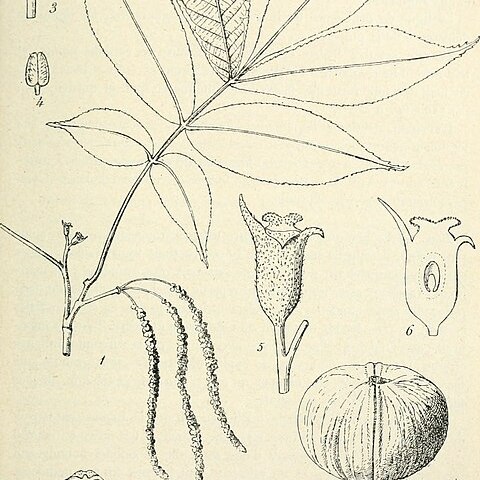A medium sized deciduous tree. It grow 20-25 m tall and has a trunk 50-60 cm across. The end buds are naked and brown. The leaves are 15-25 cm long. The leaf stalk is about 6 cm long. It is hairy. There are 5-7 leaflets. The blade is oval or sword shaped and 7-18 cm long by 2-6 cm wide. The base is unequal. It tapers to the tip. The male spike is 12-13 cm long. Its stalk is 1-5 cm long. The nuts are half round and 2.2-2.5 cm long by 2.6-3 cm wide. The husk does not have prominent wings. The shell has 4 faint ridges along it.

